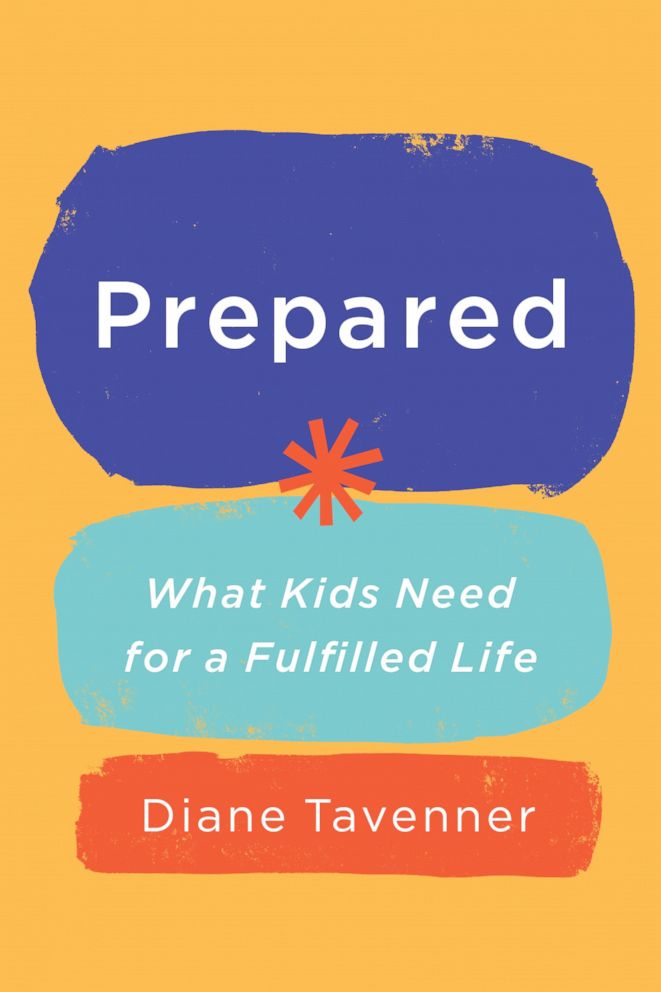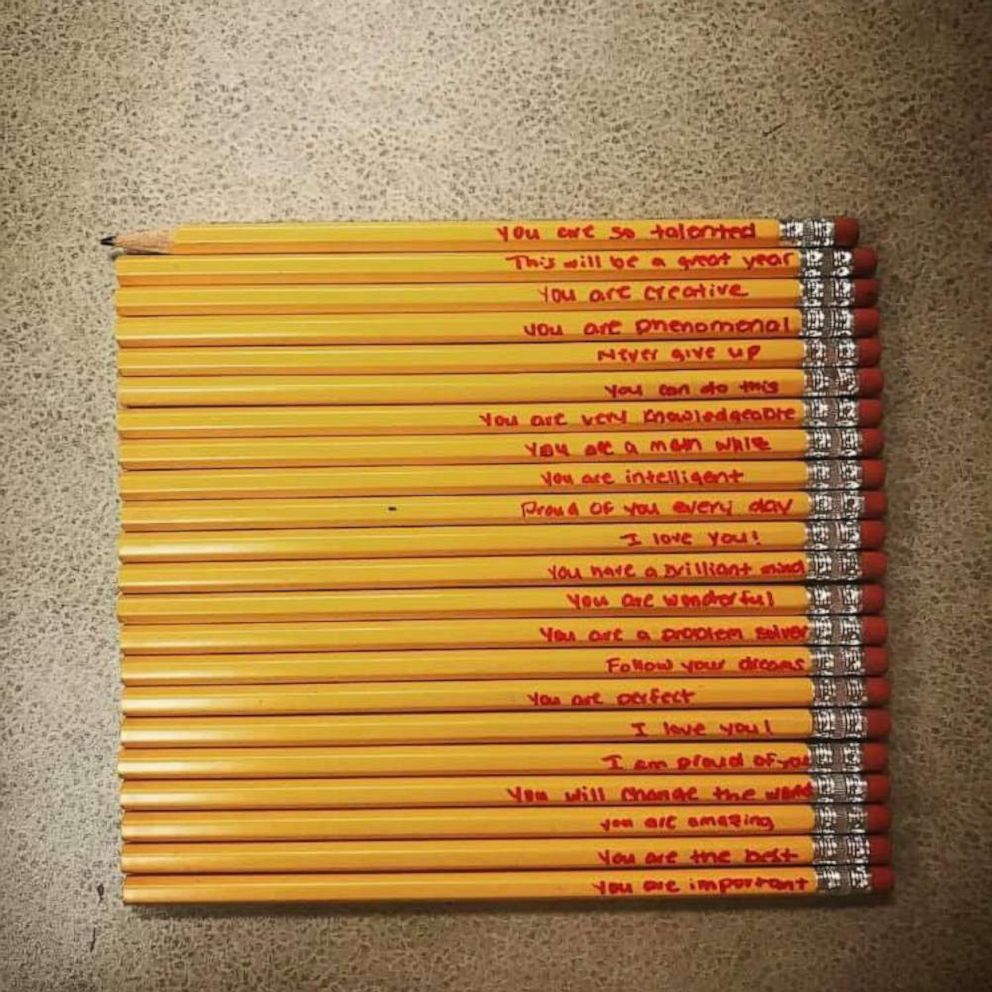Book excerpt: 'Prepared: What Kids Need for a Fulfilled Life'
An approach to raise kids who are fulfilled, joyful and successful.
Over-scheduled, overburdened and overwhelmed are words veteran educator Dianne Tavenner has heard about the challenges of modern parenting.
But it doesn't have to be that way, according to Tavenner.
As the school year kicks off, Tavenner is out with a new book, "Prepared: What Kids Need for a Fulfilled Life," in which she offers parents a different approach to raise kids who are fulfilled, joyful and successful by helping children find their gifts and interests. Tavenner draws from her experiences as a mother and the founder and CEO of Summit Public Schools, a public-school network.
Read on for an excerpt from her book.

Helping your child discover curiosity-driven knowledge
The science of learning has consistently shown a correlation between kids’ familiarity with a subject and their performance and skill. For instance, in one study, middle schoolers took a reading comprehension test wherein they read a passage about baseball. Those who had background knowledge about baseball scored higher, regardless of whether they’d been considered poor or good readers beforehand. What this tells us is that if we want our kids to be good at valuable skills like critical thinking, they need to know and understand the stuff they are critically thinking about.
These study results resonate with our personal experiences, too. Most of us can remember a time we tried to read something yet didn’t know a large number of words. This can happen for young kids as they learn to read, but it can also occur to adult readers. For example, if I try to read a complex medical or legal text, I’ll struggle to understand much of anything. Sure, I can use strategies like looking up words, and trying to figure out meaning through context, but the reality is if there are too many words I don’t know, describing things I have no concept of, those strategies won’t work.
Even if I’m rapidly searching for definitions from Google, I can’t hold all of the new information in my head long enough to make it through a sentence. I wouldn’t be able to understand what I was reading. However, you could give me a similarly complex text on something I know really well, like education policy, and I could use those same strategies and figure it out. In one case I would look really dumb and in the other I would look really smart. I’m not unique.
This is where we have a really big chicken-and-egg problem. On the one hand, it’s easier to learn more and perform academically when you already have knowledge about a subject, but the best way to acquire that knowledge is to learn about it. School makes this unproductive cycle even worse. Up through third grade, schools focus on teaching kids to read. However, in fourth grade, a switch occurs and kids are expected to read in order to learn new information. This obviously creates a problem for kids who haven’t really learned to read by fourth grade, but as studies show, reading proficiency is heavily dependent upon how much you already know about what you’re reading. There are many implications to this for schools, but as a parent, my biggest takeaway is this: my child will learn more and perform better in school if he has a lot of knowledge to begin with.
A common temptation, unfortunately, is to try to cram as much information in our kids’ heads as we possibly can. Parents often have this impulse, which is why we enroll our kids in places like Kumon and encourage memorization of facts by buying games that claim they will teach our kids important things. Teachers have this impulse, too, in large part because of a long-held societal view of the role of the teacher as someone who stands before a class, doling out knowledge. But there’s another, better way for kids to acquire knowledge, one that stems from their innate curiosity.
The top three blocks in the habits of success are self-direction, curiosity, and sense of purpose. This is because as we think about adolescents moving into adulthood, we shift responsibility to them for their own learning and growth. Learning begins with curiosity. When a person genuinely has a question, the next logical thing to do is to seek an answer to it. People ask questions about things that interest them and generally aren’t curious about things that don’t. And outside a formal classroom experience, when someone wants to find an answer, they need to self-direct to get it.
The solution to the chicken-and-egg problem, then, is curiosity-driven knowledge. Simply put, when we enable kids to follow their curiosities and interests, they learn much more. As they learn much more, they get better at learning. It becomes a virtuous cycle.
Look back: Build reflection into your life.
What it is: Taking time to think about your day or week and consider obstacles encountered, what worked, and what didn’t.
Why it matters: Self-reflection helps us to better understand ourselves and how to learn from both successes and mistakes.
What it looks like:
Dedicating time at the end of each day or week to discuss what happened, why it matters, and what, if anything, we would do differently.
Asking open-ended questions that encourage your child to think deeply about a specific situation — what did they want to happen? How did it make them feel?
Helping your kids understand and explore the consequences of a choice they have made, and the ensuing result.
Think ahead: Set goals, big and small, and practice achieving them.
What it is: Being intentional about the future.
Why it matters: Looking forward and setting goals is a powerful skill-set that can be used across every part of life.
What it looks like:
Starting each morning or week with time dedicated to anticipating what you need in order to be successful.
Setting goals at home together with your kids and making plans to carry them out.
Helping your kids practice self-direction: knowing when to shift strategies, seek harder challenges, and ask for help.
Seek purpose: Define what you care about and start pursuing it.
What it is: Developing a clear sense of purpose in our lives that motivates us and gives us direction.
Why it matters: Understanding what you care about and how you want to contribute to the world is critical to knowing your next steps.
What it looks like:
Helping your kids understand their spark of energy, excitement or wonder and what it means.
Encouraging questions and the seeking of new information and experiences.
Prompting your kids to further explore existing interests or curiosities and relate them back to learnings from school, their community, and the world.
Reprinted from PREPARED: Copyright © 2019 by Diane Tavenner. Published by Currency, an imprint of Penguin Random House LLC.







